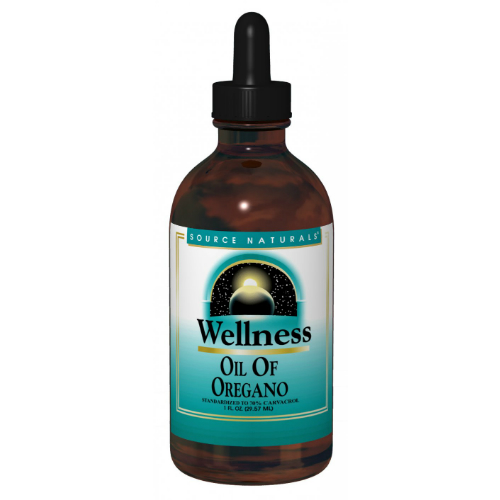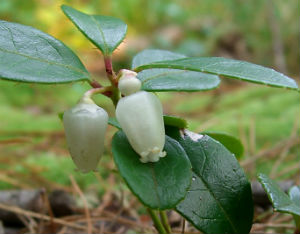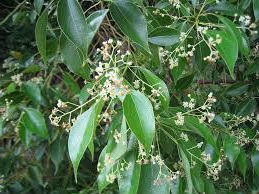|
Search Term: " Linimen "
Oregano Plant Is the Most Potent Antimicrobial In The world
Date:
November 15, 2016 07:24 PM
Along with its culinary usage, oregano shows antimicrobial and antioxidant properties and possess probable activity like an antispasmodic and in diabetes. But there is no clinical proof to facilitate the usage of oregano in any signs. Normal or wild oregano is a perennial plant grown in the Mediterranean region and Asia. It is also cultivated in the United States. The creeping rootstock of oregano makes a downy, square, purplish stem with reverse ovate leaves. The plant stem also grows about 76cm tall. Purple two lipped flowers develop in terminal groups from July to October. Features of OreganoThis plant has been a normal ingredient in Italy, Spain and Italian dishes like a spice and flavouring compound for several years. Its basic purpose was like a cautious digestive and circulatory stimulant. This plant has been availed in perfumery for the volatile oil materials, particularly in scenting soaps. The antiseptic feature of medicinal and aromatic plants and the extracts have been identified since antiquity. It has been recommended that an infusion of the new herb is useful in treating a collapsed stomach and indigestion, colic, headache and nervous problems as well as for some respiratory ailments. A mixture of the flowers has been utilized to avoid seasickness. Uses of OreganoThe oil of this plant has been availed externally in lotions and Liniments and to ease toothache. Oregano has been utilized like an ant repellent. Oregano has ursolic and oleanolic acids, hydroquinones, flavonoids, rosmarinic, caffeic,tannins, lithospermic acid and phenolic glycosides. The compounds of phenolic represent seventy one percent of the full oil. The carvacrol and polar phenols thymol are accountable for several of the properties of the necessary oil as well as terpinene and P-cymene. Research has compared the impacts of oregano necessary oil, carvacrol and thymol on fungi. All three totally reduced fungal development of aspergillus and penicillium species. The oil also seems to possess certain activity against Candida species, probably due to the reason of its carvacrol content. The oregano volatile oil have explained in vitro antibacterial activity against different types of gram negative and gram positive microorganisms like pseudomonas, listeria, salmonella, proteus and clostridium species as well as certain methicillin resistant. There are different reports explaining antiparasitic activity of oregano. The origanum vulgare oil has been presented to remove normal parasites in pheasants and chickens. There are also some other Potent Antimicrobial seen in the world like clove, cinnamon, nutmeg, onion, garlic, anise, sassafras, ginger. These all have certain amount of antimicrobial properties in it. Related Products
(https://vitanetonline.com:443/forums/Index.cfm?CFApp=1&Message_ID=3451) Wintergreen Oil- Used For Pain, Arthritis, Headaches and More
Date:
February 26, 2014 09:06 AM
What is wintergreen
Generally wintergreen has been utilized for respiratory conditions however the essential utilize as of late has been as a part of Liniments and treatments for bulky issues, for example, lumbago, sciatica, neuralgia, myalgia, and so on it is known for its capability to diminish bone agony.
(https://vitanetonline.com:443/forums/Index.cfm?CFApp=1&Message_ID=3038) What Is Camphor Oil Good For
Date:
February 13, 2014 06:03 AM
What is camphor
Camphor has been widely used to alleviate definitive skin medical conditions. The FDA has approved the oil extracted from camphor for the relief of any form of skin irritation or any other general pain related to skin issues. To provide pain relief for bruised areas, camphor oil is applied as a Liniment on the affected skin part. Essential stimulant The oil is known to boost the functioning of the circulatory system and some metabolic activities of the body like digestion and excretion. Information on organicfacts.net reveals the importance of the oil in the treatment of ailments associated with improper circulation, sluggish or overactive metabolic rates and some other less common medical conditions. Anti-inflammatory/sedative agent Both the internal and external types of inflammation can be cured due to the cooling and penetrating effects of the oil. It can be mixed with bathing water to provide an extra sensation of coolness. Respiratory conditions such as cold and coughing should worry you the less. Clear guideline indicate how the oil can be ingested in the form of tea, thus reducing congestion within the respiratory tract. Anesthetic Camphor is a reasonably effective anesthetic that is widely used in local anesthesia. It increases the numbness of the sensory nerves at the area of application. Consequently the severity to develop nervous disorders or convulsions is greatly reduced. Pain reliever Research studies shows that when camphor oil is applied, it numbs the nerve endings, then warms the painful area while stimulating the circulation to stiff muscles and limbs. Ultimately this makes camphor a favorite oil which can be effectively used to relieve muscular pain, back pain and arthritic pain.
(https://vitanetonline.com:443/forums/Index.cfm?CFApp=1&Message_ID=3016) Why Is Capsicum Cayenne Good For The Heart?
Date:
December 27, 2011 07:48 AM
Cayenne and Heart HealthThe heart is something that is vital to any one of us and that is a fact. Recent numbers have revealed that over a million Americans die each year of a heart attack. So all the more reason for us to be careful with our hearts, make sure we keep it in good health and make sure we do everything we can to keep it working like it should because I am pretty sure that you do not want to be part of that next million next year. Heart Health Our heart is one of those organs in the body that truly plays an integral role and the none functioning of it will cause your expiration in just a matter of minutes unlike other organs when damaged there is still a possibility for you to survive it, but no, not the heart, once you are done, you are done and that is why its health should be one of our main concerns. The heart’s main function is to supply blood to other parts of the body and it is literally our pumping station. It does not stop at any time in our entire life, I am sure no one will contend with that. So I feel that it is our obligation to find out how we can keep the heart healthy. Well, the usual will always be there like exercise and proper diet but if you want to look at other ways aside from that and aside from medication then the way to go is the natural way and what can be more natural than supplementing with something which is derived from an everyday vegetable like peppers. Capsicum This refers to the wide variety of tropical pepper plants and as such is also known by other names like cayenne pepper, chilli pepper, red pepper, paprika, Hungarian pepper and Mexican pepper. It is unclear as to what exactly is its geographical origin but it is commonly agreed upon that it is a native of tropical regions such as China, Philippines, Tonga, Samoa, Iraq, Haiti, Hawaii and Mexico. One of its benefits is its ability to regulate blood circulation and alter temperature regulation because of the substance found in it which is known as capsaicin. Its seed has been proven in various studies to have antibiotic properties and if applied topically can even desensitize nerves and can be used as an anesthetic. When used as a Liniment it is able to help with the stimulation of circulation as well and aid in the removal of waste (detox) products therefore allowing an increase in nutrient flow to the different tissues in the body which is why it is effective in relieving muscle spasms, bursitis and shingles. Good for the Heart One of the reasons why it is good for the heart is because it has the ability to stimulate blood vessels dilation and help relieve chronic congestions which in turn will improve blood circulation. It also has the ability to lower blood cholesterol levels and increase metabolism which are both vital to maintaining heart health.
(https://vitanetonline.com:443/forums/Index.cfm?CFApp=1&Message_ID=2551) What is Myrrh and How Does it Boost My Health
Date:
April 25, 2011 04:22 PM
Myrrh And Your HealthMyrrh is one of the oldest herbal remedies in the East and the West. It had a strong presence in many religious traditions of the ancient world. It was even compared to gold in value at some time in history. Early physicians noted its antibacterial properties and added it to poultices and health tonics. Modern medicine has started to look into its medicinal potential in lowering cholesterol and blood sugar. Inhibits Pain Chemicals Myrrh is obtained from the plant species Commiphora myrrha, though there are other related species that produce the same resinous gum. It is native to the Levant and the surrounding regions. As its use were quite common during the ancient times, it spread to eastern countries, eventually reaching India and China, where it remains an important part of folk medicine practices to this day. In addition to its pleasant aroma, myrrh was prized for its antiseptic and analgesic properties in the old days. It was one of the ingredients used by ancient Egyptians in the mummification of their dead. Throughout the centuries, myrrh has been used primarily as a perfume or wound salve. It has a soothing effect on lesions of body surfaces that seem to remove the perception of pain. Improves Insulin Resistance Earlier studies have noted the benefits of myrrh to patients suffering from diabetes, drawing on its uses in Ayurvedic and Unani medicine. In India, physicians that practice both conventional and Ayurvedic medicine have ascribed certain species of myrrh with properties that remove disorders of the circulatory system, notably high blood sugar. Myrrh decoctions are the usual herbal preparations, but it is also available as Liniments, balms, salves, tinctures, and incense. In one laboratory study, myrrh extracts appear to lower serum glucose levels. It is postulated that it ameliorates symptoms of metabolic syndrome by enhancing the effects of the hormone insulin. It increases the sensitivity of cells to insulin, even promoting faster glucose metabolism. In the Middle East, it is one of the mainstays of treatment for diabetes type 2. Reduces Total Lipid Levels Myrrh has been the subject of decades-long research on its role in the management of cholesterol. In the latter half of the 20th century, it was discovered that low-density lipoproteins play a major role in many cardiovascular diseases, such as atherosclerosis. The dichotomy of bad and good cholesterol hit the mainstream media to promote awareness of the lifestyle factors tied to cardiovascular diseases. High-density lipoproteins are dubbed good cholesterol in contrast to low-density lipoproteins, or bad cholesterol. Low-density lipoproteins are actually involved in the formation of plaques within the blood vessel walls that leads to many complications. It has been observed that myrrh reduces total lipid levels in the blood by raising high-density lipoproteins and lowering low-density lipoproteins. Give myrrh a try and experience its health beneficial properties for yourself!
(https://vitanetonline.com:443/forums/Index.cfm?CFApp=1&Message_ID=2281) | ||||||||||||||||||||||||||||||||



 Wintergreen (Gaultheria procumbens) is in the heather family of organic plants and is local to North America. It is a little evergreen herb that develops just something like 6 inches high with thin crawling stems. It has hanging white blossoms which are accompanied via red berries. Local Americans used to bite the stems to build respiratory limit. Early American pilgrims had their youngsters bite the leaves for some weeks each one spring to avoid tooth rot and throughout the American Revolution, it was a substitute for Black Tea. They so reveled in the essence that it has proceeded right up 'til today as the character of root brewskie, mulling over gum and toothpaste. The oil hails from steam refining of the leaves and produces an in number, entering fragrance. The science of wintergreen is very nearly indistinguishable to that of birch .
Wintergreen (Gaultheria procumbens) is in the heather family of organic plants and is local to North America. It is a little evergreen herb that develops just something like 6 inches high with thin crawling stems. It has hanging white blossoms which are accompanied via red berries. Local Americans used to bite the stems to build respiratory limit. Early American pilgrims had their youngsters bite the leaves for some weeks each one spring to avoid tooth rot and throughout the American Revolution, it was a substitute for Black Tea. They so reveled in the essence that it has proceeded right up 'til today as the character of root brewskie, mulling over gum and toothpaste. The oil hails from steam refining of the leaves and produces an in number, entering fragrance. The science of wintergreen is very nearly indistinguishable to that of birch .  Camphor oil is a medicinal substance extracted from the wood, leaves and roots of the camphor tree. Typically, the camphor tree is usually found in some parts of Southern Asia, South America and in various parts of the United States. Although the oil from camphor tree is harmful when ingested in excess amounts, it has various benefits if used topically. Basically, I did a decent research and got a lot of good information indicating how needful the oil is.
Camphor oil is a medicinal substance extracted from the wood, leaves and roots of the camphor tree. Typically, the camphor tree is usually found in some parts of Southern Asia, South America and in various parts of the United States. Although the oil from camphor tree is harmful when ingested in excess amounts, it has various benefits if used topically. Basically, I did a decent research and got a lot of good information indicating how needful the oil is.




